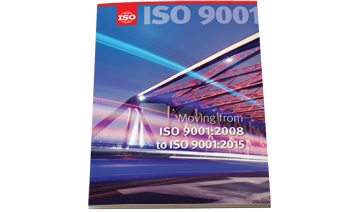
STC on Track for ISO Revision
STC has been certified to the ISO 9001 quality program continually since 1999, and STC achieved re-certification in November of this year.
The ISO 9001 standards are revised every five years or so, requiring periodic recertification to the latest ISO revision. The standard was revised again this year, updating the previous 2008 standard.
The latest revision is ISO 9001:2015, which requires greater emphasis toward anticipating the risks present in the organization’s environment.
This risk-based thinking is not new to the ISO 9001 quality management system, which has always focused on anticipating and preventing mistakes. However, the revised standard has made the approach explicit by specifically addressing Organizational Context, Leadership, Planning, Support, and Performance Evaluation.
“It’s left very much up to the organization, taking into consideration, of course, their customer requirements and the regulatory framework in which they may operate, to define their own needs for documentation in order to manage the processes.”
While discussing the 2015 revision, Nigel Croft, Chair of the ISO subcommittee that developed and revised the standard, emphasized the flexible nature of the new standard.
According to Croft, “It’s left very much up to the organization, taking into consideration, of course, their customer requirements and the regulatory framework in which they may operate, to define their own needs for documentation in order to manage the processes.”
“It provides the confidence, that’s the key word, confidence, that customers around the world—right through the supply chain, business-to-business, business-to-consumer, right down to us as individuals—can have confidence in the products and services that they’re receiving from their certified suppliers.”
Because STC was recently re-certified to the 2008 revision, the Quality team is in the process of implementing a plan for meeting new requirements as early as next year.
Angie Calkin, Vice President of Operations at STC, is pleased with the company’s ability to meet the revised standard.
“Because we’ve considered and planned for the various risks that exist for us, the 2015 revision is not very different from the way we’ve done things,” Calkin said. “The biggest change for us will be in the documentation of some of these things.”

